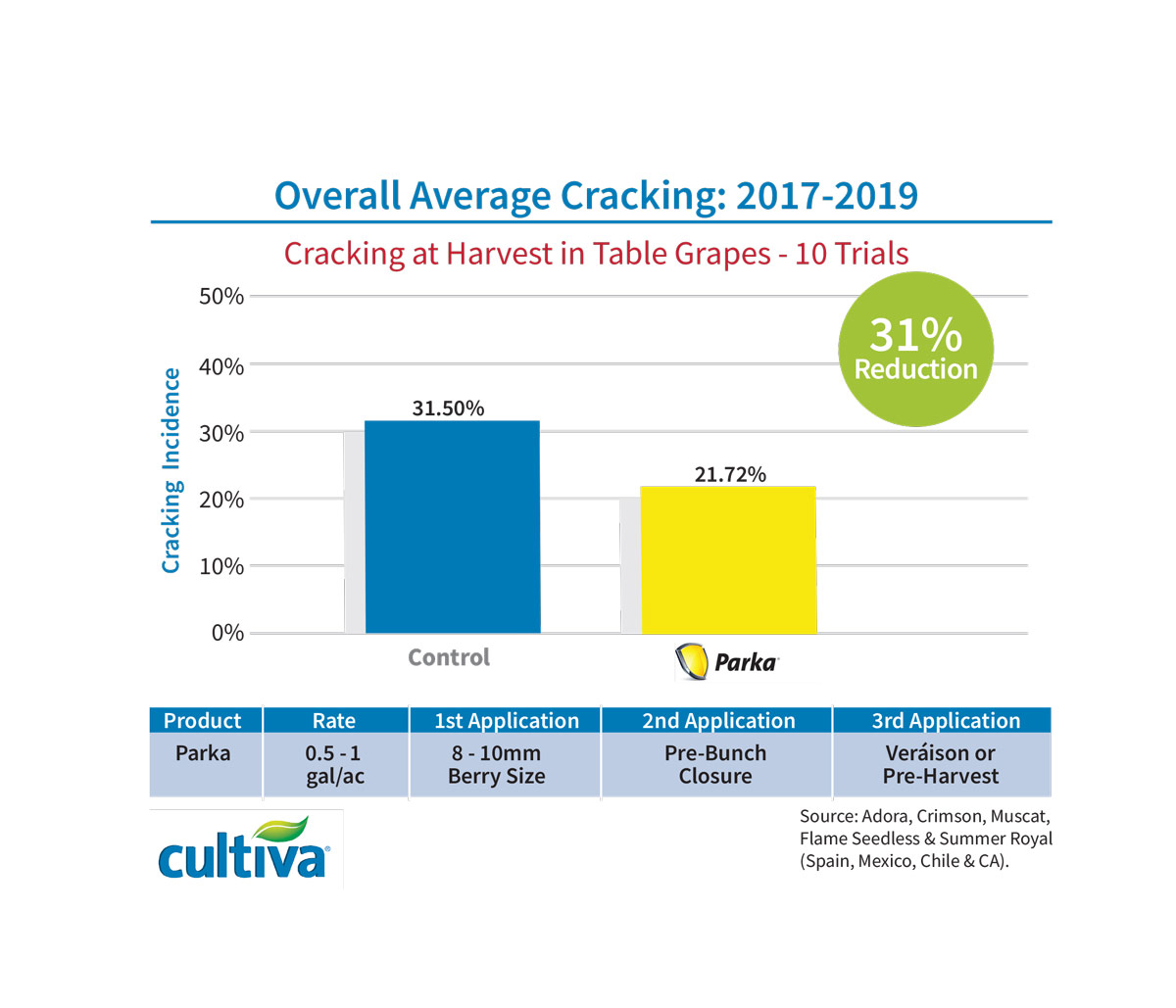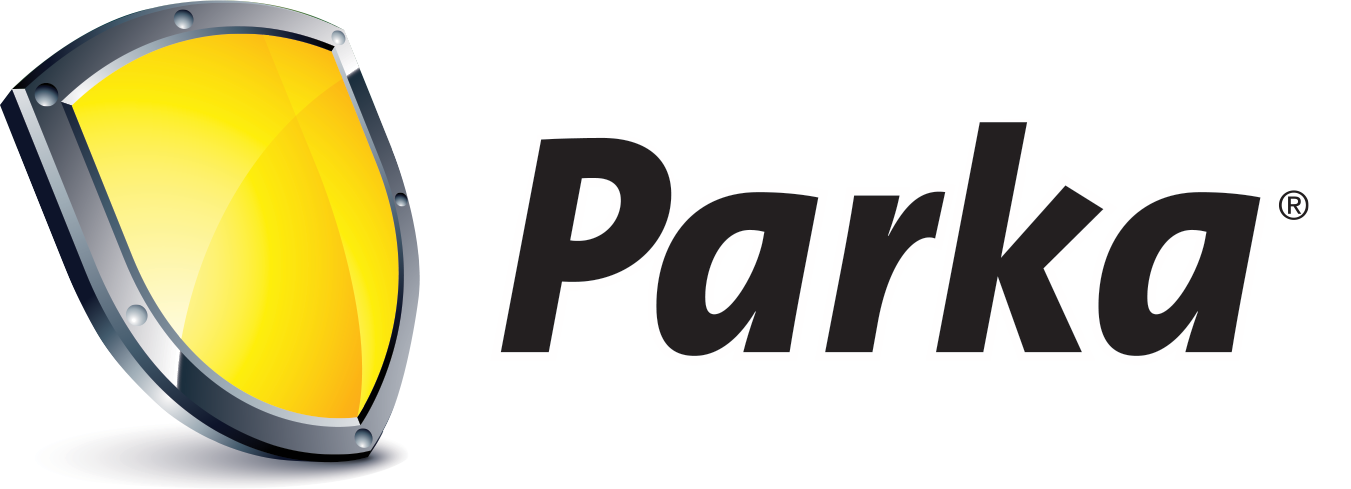Reduce Cracking in Grapes by Strengthening the Cuticle
Grape fruit cracking is a physiological disorder that results in loss of marketable yield and reduces fruit quality. Furthermore, the cuticular microfractures and skin cracks provide an entry point for pathogens that can negatively impact the fruit, causing rot and reducing shelf life. Therefore, cracking causes major economic losses for growers.
Along with cultural practices such as row covers, soil covers, and irrigation management, cuticle supplements can play a large role in reducing cracking. Parka supplements the cuticle of the grape, coating it with a clear, hydrophobic, and elastic lipid bilayer that expands along with the developing fruit. This layer fills in microfractures as soon as they begin to develop. Parka also increases cracking resistance by enhancing cell membrane stability.
By supplementing and enhancing the cuticle of the fruit, Parka also increases overall fruit quality.


Why use Parka on Grapes?
- Proven to reduce cracking damage by up to 30% over control.
- Increases fruit quality and storage ability.
- Easily tank mixed with foliar nutrients and pesticides.
- Leaves no visible residue.
- Exempt from maximum residue levels.
- Zero preharvest interval and zero worker reentry interval.
How to Use Parka in a Program
For cracking prevention, Parka should be applied to grapes at 10 mm berry size and again at pre-bunch closure. Reapply as needed every 14 to 21 days. Early applications help prevent the development of microfractures responsible for fruit cracking.
For post-harvest quality enhancement, apply 10 to 14 days prior to harvest.
FAQ
What Causes Cracking?
There is no conclusive answer on the exact causes of cracking in grapes, but research points to interactions between the environment, and the extensibility and integrity of the cell wall.
Description automatically generatedCracking occurs when the integrity of the cell wall in the fruit cuticle is disrupted or fails. This can occur because of a heavy rain event when water is absorbed through roots or the fruit cuticle, and turgor pressure exceeds the elasticity of the cuticle. Water absorption through the cuticle is facilitated by cuticular microfractures. As sugar concentration increases during ripening, so does the osmotic potential (absorption potential), and the longer water remains on the surface the more the fruit can absorb. Often, this type of cracking appears on the pedicel end of the fruit or at the distal end where water droplets can form. Lateral cracking anywhere on the fruit also may occur.
Cracking is also caused by water that is taken up by the roots and translocated through the vascular system. If more water is absorbed than the fruit can hold, the turgor pressure in the cells builds to the point where the fruit cracks from within. This type of cracking usually occurs after high-volume rain events followed by warm temperatures.
Temperature fluctuations of 50°F (30°C) or more, periods of dryness followed by significant rain, or micronutrient deficiencies can also contribute to cracking. Some grape cultivars are more susceptible to cracking than others.

How Does Parka Prevent Cracking in Grapes?
Parka coats the fruit with an elastic, hydrophobic lipid bilayer, which seals the microfractures as soon as they appear. If applied at fruit set, Parka also prevents their formation. Because Parka is hydrophobic, it also repels water from the fruit surface. Parka also increases the concentration of anthocyanins. These are antioxidants that prevent the development of oxidative molecules that degrade cell membranes. By supplementing the cuticle and adding elasticity to it, as well as repelling moisture from the fruit surface and increasing cell membrane stability, Parka contributes to better cracking resistance.
What Do Growers Like About Parka?
Primarily, growers like Parka because it is effective. Reducing cracking by up to 30 % over control helps protect profits. In addition, Parka is easily tank mixed with many other inputs, including fertilizers and pesticides, which saves fuel and labor costs. Parka has an excellent worker safety profile with a zero preharvest or postharvest interval, and no maximum residue level. Parka is transparent and does not leave a white residue on the fruit, which workers and packers appreciate.

